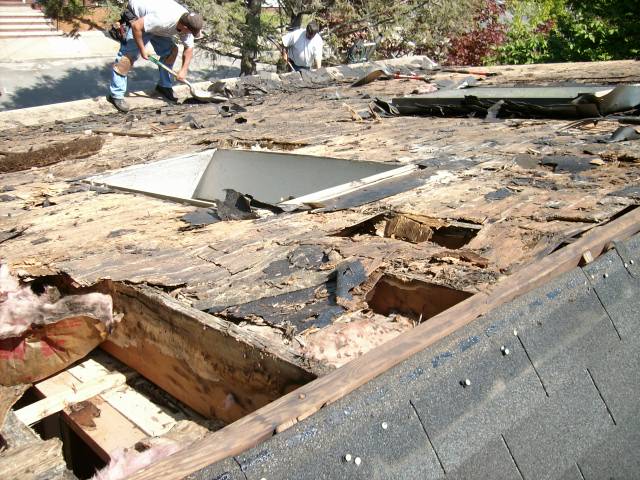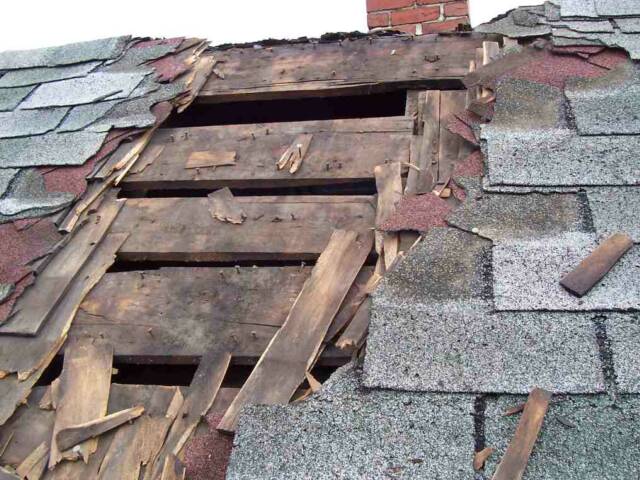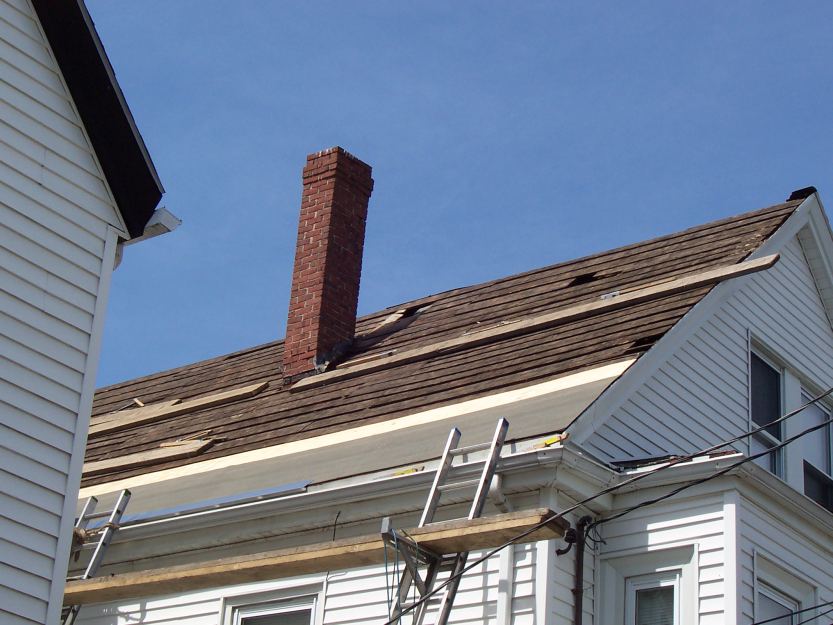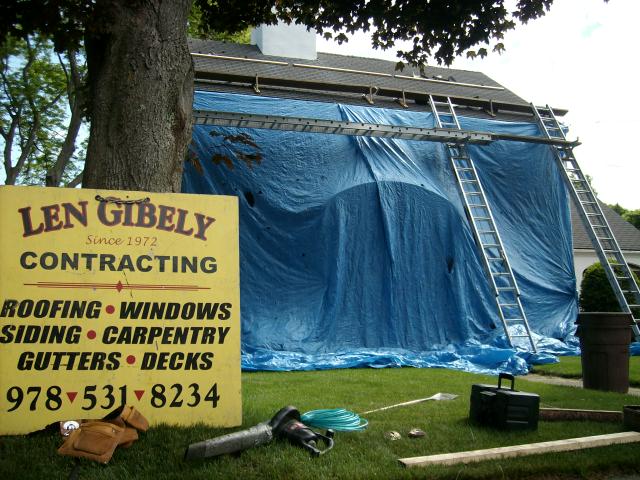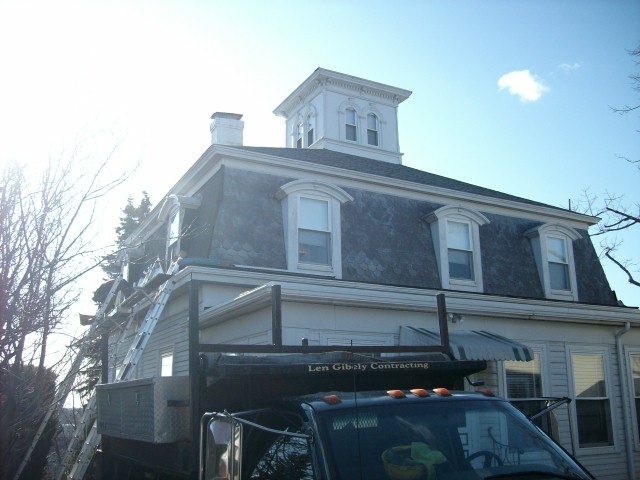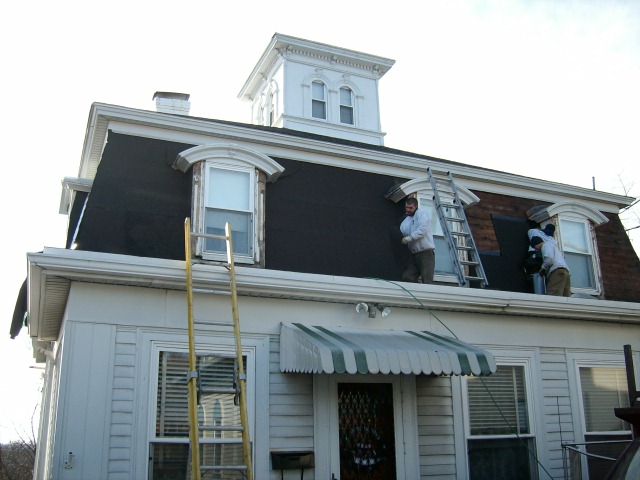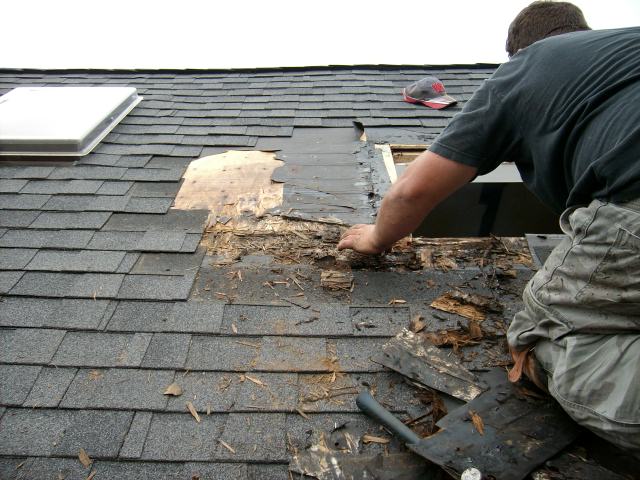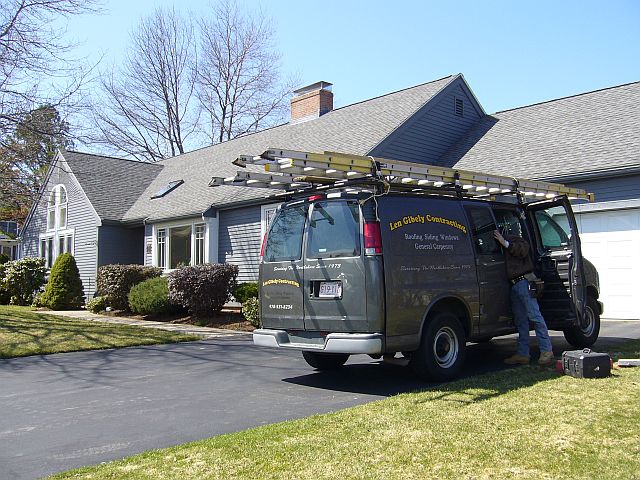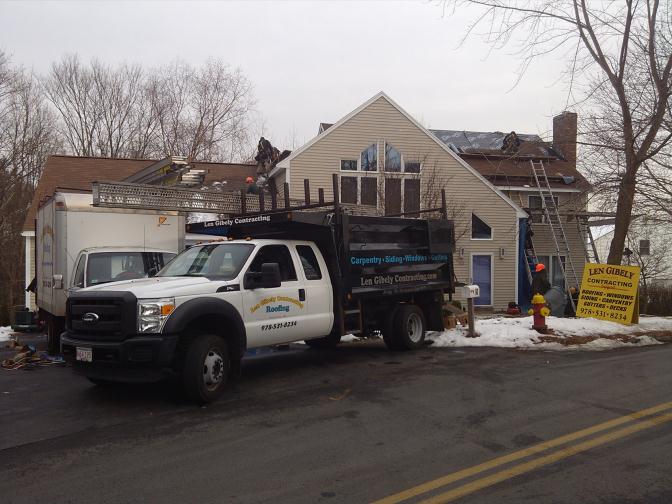
Initial Consultation
Since every home is different, it is crucial that we have an on site consultation to discuss your roof’s needs and your concerns. We have no salesmen and our estimators all have Construction Supervisor Licenses(newly required in Massachusetts to roof), and all are well versed in total home construction. Roofs vary from simple Ranches to more complex Victorians with turrets. Each roof will have different dimensions, and require a different approach. Besides receiving a proposal, the consultation is a good time to discuss current roof issues(ie. Blow-offs, leaks, ice-dams, algae growth) and our method to remedy the problem. Every roof proposal will also have a packet with product samples, customer references, and all insurance certificates.
Removal and Inspection
Stripping the existing roofing is always a priority for the longevity of your new roof. Stripping the roof allows us to inspect the underlying wood decking and remedy any rot before it reaches structural members. Although most roofs are free from decking rot, we certainly have the capabilities to repair any situation we encounter.
Stripping the roof is also important for the final adhesion of your new roof. Roofs have a much stronger hold to clean and solid decking than to old bumpy shingles. Finally, stripping a roof will allow us to put new protective underlayments between the decking and new roof. Ice and water shield and roofing felt are key to a well performing and long lasting product.
All roofs we strip are tarped at the gutter line to prevent damage to siding and windows. We cover bushes and shrubs, and our crew is all cognizant of the fact that a clean house and yard are just as important as a well performing and good looking roof.
Underlayments and Flashings
We install felt paper and ice barrier shield as a standard step in preparing roof sheathing for shingles. They give your roof the extra protection in rain storms and protect the interior from damage during the icy winter months. Most old roofs do not have this product which self-seals around nails and helps shed water that gets under shingles off the roof. Building code requires ice and water shield be installed on the leading edges of your roof. Depending on the slope of the roof and the depth of soffits, a certain amount of coverage is prescribed. Often 3 or 6 feet of coverage is required. Gibely roofers take this requirement one step further, covering all roof valleys, sidewalls, and penetrations including pipes and chimneys with the barrier.
Chimney flashing is ground into the base of the chimney: top and bottom lead pans and side lead step flashing. Lead is the material of choice for longevity and malleability allowing the flashing to last multiple roofing jobs. The old flashing is ground out of the chimney using a diamond blade and new lead is embedded and mortared into the brick. Ice and water barrier surrounds the base of the chimney giving added protection.
Standard vent pipe flashing is changed with any roofing job. The flashing has an aluminum base with a rubber gasket that seals against the pipe. We install new pipe flashings to all pipes and cover the underside with multiple tiers of ice and water barrier for extra protection.
Drip edge protects fascia and rake boards from rot. We install drip edge to all perimeter edges, and colors are chosen based on your home’s trim color.
When sidewalls form leaks, we also have the ability to remove siding and run ice and water barrier up walls before step flashing and shingling. Our carpenters can install clapboards, shingles or vinyl and can create custom metal flashings on-site or at our metal shop. Our carpenters and roofers work together to provide the tightest and best looking finished product.
Ventilation and Cleanup
Attic ventilation is an important part of roofing that is often overlooked. Proper attic ventilation extends the life of a roof and is required by shingle manufacturers to authenticate their warranty. Proper ventilation eliminates problems by minimizing the temperature difference between the attic and the air outside. This positive air-flow will remove moisture and heat from the attic. Built up heat and moisture can increase the frequency of ice dams and damage structural and personal items within the attic where temperatures can easily reach 140 degrees. The built up heat will even raise energy costs.
Ice Dams form when melting snow continually refreezes at the roof edge and then backs up under the shingles. Even roofs that do not leak in heavy rain storms can show leaks during ice dam season. Proper ventilation used in conjunction with heavy insulation and ice and water shield can help prevent these dams from entering your home. R38 is the current code for insulating attics and we have the ability to lay in additional fiberglass or blow in cellulose for added energy savings and ice dam protection.
There are many types of attic vents available today. There are round power vents, ridge vents, wind turbine vents, soffit vents, gable vents, edge vents, and cupola vents. Every home design is different and what works best in one situation is not always the
preferred approach. During your initial consultation we will develop a ventilation system that will work and last. A preferred approach is the passive
ridge vent – soffit vent combination. This allows air to intake across the eaves and vent across the peak.
Cleanup is critical to a pleasant replacement experience and no one understands this more than our roofing crew. Our men have children, pets and yards themselves and realize the importance of picking up debris and nails. Part of the roofing crew is entirely dedicated to cleaning the grounds and supplying our roofers with the materials they need. These men use magnetic rakes and magnetic sweepers to pick up nails, and they manicure lawns and bushes with the aim of leaving the grounds cleaner than when they arrived. All debris is loaded into our dump trucks and leaves your property at the end of the day. If the roof requires another day of work, we will always leave our materials and your property neat for the evening. We deliver our stock on the day we anticipate starting work to keep your driveway clear for the longest time possible.


